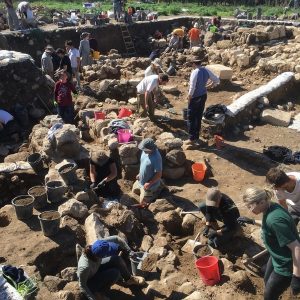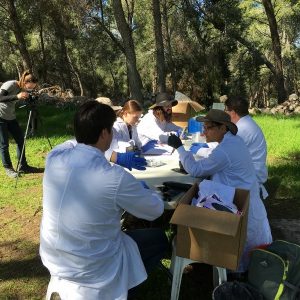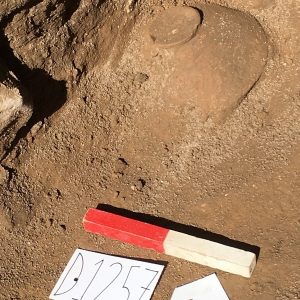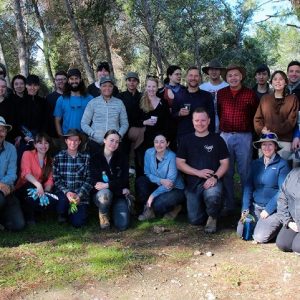
Mr de Bres joins Macquarie University’s Khirbet el-Rai excavation
Recently I was awarded a $3000 teacher scholarship from Macquarie University to participate in a three week archaeological excavation at Khirbet el-Rai, an iron-age hilltop settlement situated along the ancient coastal route that passes through the Judean foothills. The 2020 dig was the fifth year staff and students from the university and teachers from NSW schools have excavated the site. We left our accommodation at 6.15 every morning and passed a Roman amphitheatre on our way to the dig site – there are a lot of Roman ruins in this part of the world.
At Khirbet el-Rai we uncovered evidence from several periods of history including Roman, Hellenistic; Persian, Babylonian and Canaanite. This evidence included ancient stone walls; silos; standing stones; grinding stones; flint tools, pottery (including storage vessels, bowls, oil lamps, business seals and a shard of pottery with an inscription), a smiting god (a small religious figurine of Canaanite origin), animal bones and other organic matter. I myself found a small bronze ‘bracelet’, possibly between 2500 – 3000 years old, which was sent to a university laboratory for testing. There was also a scientific laboratory set up by the university at the site to collect and analyse soil and other samples, including ancient olive stones. All significant finds were professionally photographed and meticulously recorded.
We used a range of excavation equipment including pickaxes, hoes, small picks, trowels, hand shovels and brushes. There was also a lot of wheelbarrowing buckets of earth from the loci (the areas being excavated) down to the dump site.
We finished each day at 3pm and returned to our accommodation where we then had to wash all the finds of the day so that a team of experts could examine them. After dinner the Macquarie University staff presented lectures on the history of Khirbet el-Rai and surrounding archaeological sites, numismatics (the study of coinage) and scientific dating methods.
On the weekends we visited a number of other archaeological sites, many of which were UNESCO world heritage listed. Some examples included Qumran (where the Dead Sea scrolls were discovered); Masada; Caesarea and the Crusader port of Acre.
After teaching Ancient History in the classroom for many years it was a privilege to experience what it is really like to be part of a team investigating an archaeological site. Although textbooks and other teaching materials can be very useful, nothing beats first-hand experience. Being part of the archaeological team at Khirbet el-Rai helped me to gain a deeper understanding of this fascinating part of the ancient world and a personal and practical appreciation of the archaeological process which I can now share with my present and future students.
John de Bres





